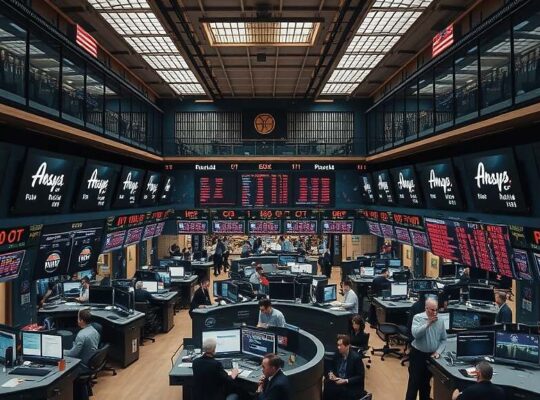German markets opened slightly lower Wednesday, with the DAX index registering around 24,295 points – a 0.2% decline from the previous day’s close. While Rheinmetall, Siemens Energy and Scout24 led the gainers, Infineon, Adidas and Beiersdorf experienced downward pressure. The muted performance reflects a complex interplay of factors, highlighting underlying anxieties within the German economy.
The upcoming SAP earnings report, slated for release after market close, is being closely watched. Analysts anticipate a profit increase compared to the third quarter of 2024 and its significance cannot be overstated. Given SAP’s substantial weighting – currently approaching 14% of the DAX – the report’s outcome is poised to significantly influence the overall index’s trajectory. This concentration of market influence within a single company raises questions about the DAX’s true representation of the broader German economy and potential vulnerabilities arising from reliance on a few dominant players.
Supporting market sentiment, albeit tentatively, is the recent decline in long-term interest rates. US Treasury yields on 30-year bonds have dipped to a six-month low, offering a degree of stability. However, this respite is underpinned by a concerning caveat. The ongoing US government shutdown is preventing the addition of new debt, a situation unprecedented in recent history. The previously reliable flow of US Treasury bonds is currently constrained, potentially creating distortions in the market and leaving investors wary of the long-term sustainability of the rate decline. Experts question whether this trend will persist once budgetary resolutions are reached.
The euro also experienced a slight weakening, trading at 1.1602 US dollars. Concurrently, oil prices demonstrated a notable uptick, with Brent crude futures rising to $62.36 – a 1.7% increase from the previous day’s close. This jump in oil prices could exacerbate inflationary pressures already impacting the German economy and potentially counter the positive effect of lower interest rates. The ongoing geopolitical landscape contributes to this volatility, raising concerns about supply chain instability and further economic uncertainty.












